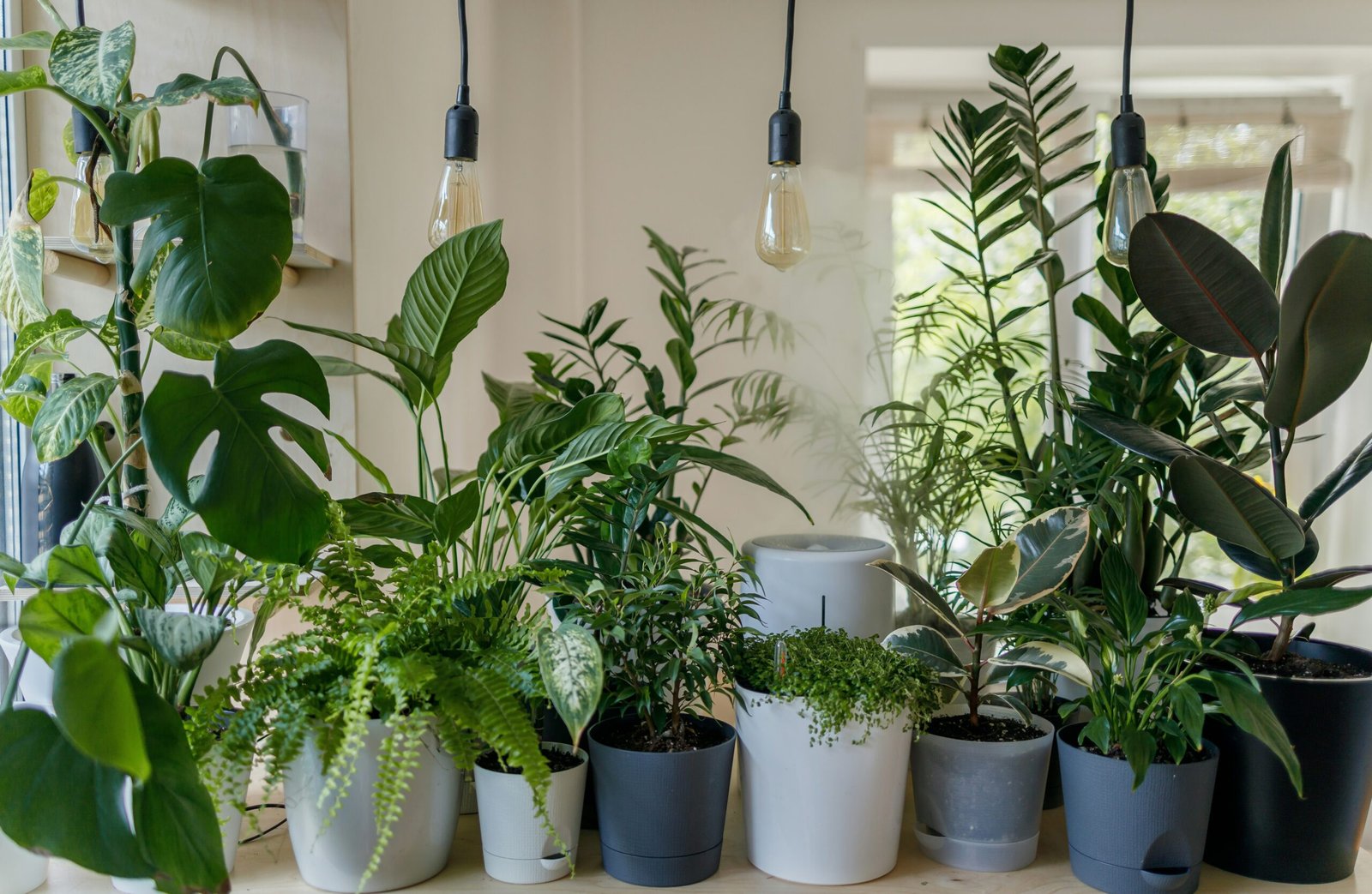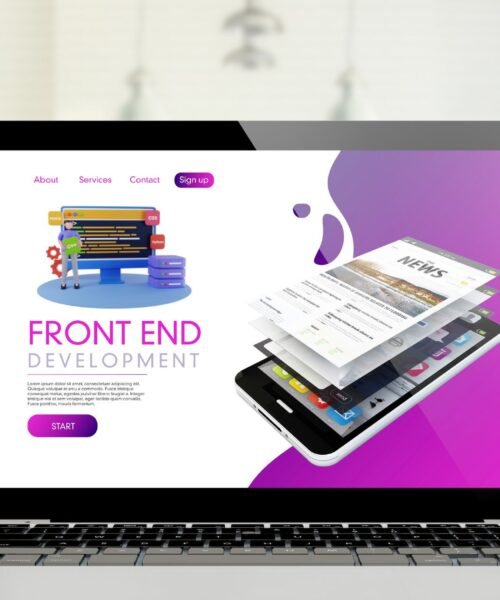A Step-by-Step Guide on How to Become a Front-End Developer
Diving into the world of front-end development is like opening the door to a vibrant digital playground. It’s both exciting and a little overwhelming, especially if you’re considering stepping into this field in 2024. With technology evolving at breakneck speed, now feels like the perfect time to jump on board. So let’s break it down together, shall we?
Starting this journey means embracing a blend of creativity and technical skills—think of it as a unique canvas where your ideas can come to life! You’ll get to craft visually appealing websites that not only look great but also ensure users have a fantastic experience. It’s a rewarding field where each project offers a chance to learn something new and to showcase your personality through design.
As we move forward, we’ll take a closer look at the essence of front-end development and why it might just be the perfect path for you. Whether you’re a complete beginner or someone looking to sharpen your skills, this guide will provide you with essential information and practical tips to kickstart your journey. Let’s dive right in!
What is Front-End Development?
There’s so much buzz around front-end development, and if you’re wondering what it’s all about, you’re definitely not alone! Think of front-end development as the beautiful face of a website: it’s everything users interact with directly. From stunning layouts and engaging graphics to user-friendly navigation, this captivating work ensures a seamless experience for anyone visiting a site.
When someone mentions front-end development, they’re talking about coding and designing the visible parts of websites and applications that make them appealing and functional. It’s like being a digital artist where you balance aesthetics with performance. You might be surprised to learn that it’s not just about writing lines of code. It also involves understanding color theory, typography, and how to optimize an experience across various devices.
The Building Blocks of Front-End Development:
The cornerstone technologies of front-end development are HTML, CSS, and JavaScript. HTML (HyperText Markup Language) structures your content, while CSS (Cascading Style Sheets) adds flair and style. Then comes JavaScript, which brings interactivity to life, allowing elements like buttons and sliders to move and respond to user actions.
Getting Tech-Savvy with Tools and Frameworks:
Modern front-end development embraces a plethora of tools and frameworks designed to streamline the process. From pre-processors like SASS to JavaScript libraries like React, these resources can elevate your development game. They can help you speed up workflows and create projects that are both dazzling and performance-optimized.
Emphasizing User Experience:
To thrive as a front-end developer, developing a strong grasp of user experience (UX) principles is crucial. Delve into how users interact with your designs, as understanding their perspectives can majorly impact how effective your work becomes.
Embracing front-end development means you’re not just coding, you’re crafting experiences. And as you embark on this journey, remember that learning is ongoing in this field. Stay curious, keep experimenting, and let your creativity shine as you step into the digital spotlight!
Essential Skills for Front-End Developers
Mastering the art of front-end development goes beyond just creating appealing layouts, it involves embracing a mix of creativity, technical know-how, and problem-solving skills. So, if you’re gearing up to dive headfirst into this exciting field, there are some essential skills you absolutely need in your toolkit. Let’s break them down together as we explore what you need to thrive as a front-end developer in 2024!
Understanding HTML, CSS, and JavaScript:
At the very core of web development are the ‘big three’: HTML, CSS, and JavaScript. Understanding HTML (HyperText Markup Language) allows you to structure content on the web while CSS (Cascading Style Sheets) is your best buddy for styling and layout design. And then there’s JavaScript, the language that brings your web pages to life! Picture it as the magic wand you wave to add interactivity and dynamic features. Make it a priority to master these languages, they form the backbone of your front-end expertise.
Familiarity with Frameworks:
Once you’ve got the basics down, diving into frameworks like React, Angular, or Vue.js can give you a serious edge. Frameworks streamline the development process by offering you pre-written code for common tasks. I remember when I first experimented with React, it felt like unlocking a whole new dimension of efficiency! With frameworks, you’ll not only save time but also learn best practices that are invaluable for a successful career.
Responsive Design:
In today’s world, users access websites from various devices, and that’s where responsive design comes into play. Knowing how to craft adaptable layouts that offer a seamless experience on mobile devices, tablets, and desktops is crucial. I’ve had moments where a site I designed looked perfect on my laptop but was a mess on my phone! Learning frameworks like Bootstrap can help you create responsive designs much easier and keep your users happy.
Version Control/Git:
You might not have thought about it yet, but understanding version control systems like Git is fundamental for managing your code. It allows you to track changes, collaborate with others, and revert to earlier versions if needed. Trust me, the first time I collaborated on a project using Git was a game changer! It felt empowering to work with peers without the constant fear of losing my work.
Soft Skills and Communication:
While technical skills are vital, don’t underestimate the power of soft skills. As a front-end developer, you’ll often work with designers, back-end developers, and even clients, so being able to communicate your ideas clearly is key. Embrace the habit of asking questions and seeking feedback, it’s all part of building strong relationships in the tech community.
Keep Practicing and Building:
One of the most effective ways to hone your front-end skills is through practice. Start with small projects that challenge you to implement what you’ve learned. I often set aside time each week to create mini-projects, whether a personal website or a simple web app. This not only improves your skills but also builds a portfolio that showcases your growth over time.
The journey to becoming a front-end developer in 2024 is not just about learning tools and technologies, it’s about nurturing a mindset of continuous learning and adaptation. Embrace each skill along the way, and you’ll be well on your way to creating websites that are not only functional but truly captivating!
Choosing the Right Learning Path
As you’ve discovered the key skills needed for front-end development, the next step is to carve out your own learning path. Choosing the right route can feel a bit overwhelming—there’s a myriad of resources and methods out there—and each promises a different journey. But that’s where the fun begins! It’s about mapping your own unique experience and finding what resonates with you in this digital tapestry.
One of the first things to consider is your learning style. Are you the kind of person who thrives in structured environments, or do you prefer a more self-directed approach? If you flourish with guidance, a bootcamp or formal class might be your best bet. These offer a fast track to learning essential skills, often with experienced instructors who can tailor insights to your pace. On the other hand, if you’re a do-it-yourself kind of person, online platforms like Codecademy, freeCodeCamp, or Udemy provide a wealth of resources that allow you to learn at your own speed. They offer flexibility that’s hard to beat, but make sure to keep your dedication on the front burner!
Discovering Learning Formats:
It’s essential to explore the different learning formats available. Whether you’re hands-on, auditory, or visual, there’s something out there that will click for you. For example, coding challenges and interactive tutorials can be excellent for those who enjoy immediate feedback and hands-on practice. Meanwhile, comprehensive video courses cater to visual learners by illustrating concepts in an engaging and digestible manner.
Mixing Theory and Practice:
Above all, don’t forget to combine theory with practice! Engage with community projects or contribute to open-source initiatives. Websites like GitHub are gold mines for collaboration opportunities. They enable you to apply what you’ve learned, receive valuable feedback, and build a network—all of which are integral to your growth as a developer. Trust me, there’s nothing quite like seeing your code come to life through shared collaboration.
Set Clear Goals and Milestones:
As you embark on this journey, it’s critical to set tangible, achievable goals for yourself. Whether it’s mastering a particular language, building a simple project, or dedicating a few hours each week to learning new techniques, having clear milestones will help keep you motivated and accountable. Plus, you’ll get to celebrate your progress along the way, which is so important!
Before you know it, with dedication and the right learning path, you’ll find yourself immersed in the fascinating world of front-end development. It’s a vibrant space filled with opportunities, and I can’t wait to see where your journey takes you. So, get ready to roll up your sleeves and dive into the creative and technical challenges ahead!
Building Your First Front-End Project
Once you’ve set your learning path, it’s time to roll up your sleeves and dive into the exciting world of building your first front-end project. This is where theory beautifully collides with practice, allowing you to put all those skills to the test. Think of it like baking your first cake—lots of preparation, a dash of patience, and when it’s finally done, you get to enjoy the sweetest reward.
Creating your first project might seem daunting at first, like being handed the keys to a shiny new car, but remember—it’s a learning experience. Start small! Whether it’s a personal website, a simple blog page, or even a sleek landing page, the goal here is to showcase what you’ve learned and to gain the invaluable experience of seeing your ideas come to life.
Get Inspired and Choose Your Project Theme
Before putting fingers to keyboard, take a moment to explore project ideas. Look for inspiration by browsing portfolios on platforms like Behance or Dribbble, or even peruse GitHub for open-source projects. Check out trending topics or something close to your heart—be it travel, wellness, or even tech gadgets. Having a personal connection to your project theme will make the development process so much more enjoyable.
Gather Your Toolkit
Now that you have your project idea in mind, it’s time to gather the tools you’ll use. Familiarize yourself with essential front-end technologies like HTML, CSS, and JavaScript. If you feel adventurous, delve into frameworks like React or Vue.js. Tools like Visual Studio Code or Sublime Text can help streamline your coding process. Don’t forget about version control systems like Git, they’re crucial for managing changes and collaborating—just in case you want to share your work.
Break Down Your Work into Manageable Tasks
The secret to overcoming the initial overwhelm is to break down your project into bite-sized tasks. Create a clear outline or to-do list of functionalities you want your project to have. Perhaps it’s designing a navigation bar, adding a contact form, or incorporating responsive design elements. Taking one step at a time not only makes the process less intimidating but also allows you to celebrate small victories along the way!
With a well-laid plan in place, you’ll find yourself navigating your project with confidence. Tackling each task at a time allows your creative juices to flow without the heaviness of the entire project weighing you down. The sense of accomplishment you’ll feel when you hit ‘refresh’ on your browser and see your project in action is simply incomparable!
Keep pushing through any coding challenges that arise, problem-solving is part of the growth experience. Soon enough, you’ll be looking back proudly at what you’ve built, knowing this is just the beginning of an exhilarating journey.
So, grab your favorite cozy drink, settle into your space, and let your creativity run wild! Your first front-end project is just a code snippet away. Happy coding!
Creating an Impressive Portfolio
The journey doesn’t stop after your first project, it actually opens up a whole new chapter that can propel you toward your dream job. Once you’ve crafted that project and watched it come to life, the next crucial step is to showcase your skills through an impressive portfolio. This is your opportunity to shine, and it’s essential for capturing the attention of potential employers.
Building a portfolio is like curating a collection of your best work—it’s your chance to display what you can do and how you think. It’s not just about having a few projects slapped together, it’s about telling a story. Think of each project as a reflection of your unique style and approach to front-end development. Choose projects that highlight your best skills, whether it’s a creative website design or a fun web application.
Crafting Your Story: Highlighting Key Projects
The first step in creating your portfolio is selecting the right projects to showcase. Aim for a mix of personal, professional, and academic projects that you’re genuinely proud of. Each piece should demonstrate different technologies you’ve mastered, such as HTML, CSS, or JavaScript. Ideally, recount your design process or the challenges you faced, this narrative gives potential employers insight into your problem-solving skills and how you handle obstacles.
Design Matters: Aesthetics and Usability
Invest some time in the design of your portfolio. It should not only look great but also be user-friendly. Use clean layouts, easy navigation, and responsive designs to ensure it’s accessible across all devices. Think of this as your digital calling card—the aesthetics should reflect your personal style and show your attention to detail. Consider including interactive elements to make it more engaging, maybe a smooth transition effect or subtle hover actions can demonstrate your CSS prowess!
Adding the Finishing Touches: Include Important Details
Your portfolio should also include an about me section, a brief introduction about who you are, and your passion for front-end development. Ensure your contact information is easy to find and perhaps even link to your LinkedIn profile or GitHub account. This way, prospective employers can easily connect with you.
Lastly, don’t forget the power of feedback. Share your portfolio with fellow developers or mentors before publicizing it. Fresh eyes can provide invaluable feedback and help you polish your presentation.
Overall, crafting an impressive portfolio is about balance. It’s showcasing your skills, telling your unique story, and presenting it in a way that’s accessible and beautiful. Take pride in what you’ve built, and let your passion for front-end development shine through every pixel!
Job Search Strategies for Aspiring Front-End Developers
With your standout portfolio ready to impress, it’s time to look beyond the digital showcase and dive into the world of job hunting. The world for front-end developers is vibrant, and while the opportunities are abundant, positioning yourself effectively is key. It may feel a little daunting, but it can actually be a fun adventure. Let’s explore some practical strategies to help you navigate your job search and land that ideal front-end developer position.
Network Like a Pro
When it comes to job searching, it’s not just about what you know, but who you know. Attend industry meetups, tech conferences, or local coder groups—don’t be shy! Whether you’re chatting over coffee with fellow developers or engaging in an online forum, every interaction is a potential connection. Remember, many positions are filled through referrals, so put yourself out there. Join platforms like LinkedIn, and actively engage by sharing insights about your projects. It could lead to your next big break!
Perfect Your Resume
Your resume is your first chance to make a lasting impression, so it’s crucial to keep it crisp and tailored to front-end development. Highlight your technical skills and relevant experiences while ensuring the layout is clean and appealing—after all, you’re in the business of design! Use action words to describe your accomplishments and don’t forget to include any contributions to open-source projects or freelance gigs. This can showcase your hands-on experience and dedication to continuous learning.
Master the Art of Interviews
Once you start landing interviews, don’t panic! Prepare by practicing common developer interview questions, but also be ready for practical tasks. Consider setting aside time to refine your coding skills or brush up on concepts you might be tested on. Mock interviews with friends or mentors can also help ease those nerves. Remember, the interview is just as much about finding a good fit for you, so don’t be afraid to ask questions about the team and projects you would be working on.
Leverage Online Platforms
There’s a multitude of online job boards specifically catering to tech roles, so why not take advantage? Websites like GitHub Jobs, Stack Overflow Jobs, or even traditional platforms like Indeed often have listings for front-end positions. Set up alerts for roles that interest you and don’t hesitate to apply even if you don’t meet every single qualification. The right opportunities often come from taking risks!
Keep Learning and Stay Relevant
Front-end development is constantly evolving with new tools and frameworks emerging regularly. Make it a habit to stay informed about industry trends through webinars, podcasts, or online courses. This not only enriches your knowledge but also makes you a more attractive candidate. Showing potential employers that you’re committed to growing your skills can set you apart in a crowded job market.
Finding your way into the world of front-end development may take some time and effort, but with the right strategies, resilience, and a proactive approach, you can forge a path that leads to success. Embrace this journey and remember, every application and interview gets you one step closer to your goals. Happy job hunting!
Continuing Education and Staying Updated
Keeping your skills sharp and relevant is crucial in the rapidly evolving field of front-end development. So now that you’re equipped with a dazzling portfolio and some effective job search strategies, it’s time to focus on the importance of continuous education and staying updated. The tech world is like a whirlwind, constantly pushing out new frameworks, languages, and tools. Embracing ongoing learning is not just a way to keep pace, it’s a chance to excel in your career.
One of my favorite ways to stay connected and educated is through online courses and workshops. Platforms like Coursera, Udemy, or Codecademy regularly update their courses to reflect the latest industry trends. I’ve often found myself signing up for new classes to brush up on JavaScript or experiment with a fresh CSS framework. What’s fantastic is that many platforms offer free trials or low-cost options, so you can explore without a big commitment. If you find a topic that excites you, dive in and make the most of it!
Online Communities for Lifelong Learning
Joining online communities is another excellent way of keeping your skills fresh. Forums like Stack Overflow or the Frontend Developer subreddit are goldmines for connecting with fellow developers who are eager to share knowledge, insights, and support. Of course, there’s also Twitter, where many industry leaders share valuable tips, resources, and even job postings. Engaging in these communities not only helps you learn but also opens doors to networking opportunities that could be vital for your future career.
Tech Meetups and Conferences: Networking and Learning
Nothing beats the experience of face-to-face interaction, and attending local tech meetups or international conferences can be incredibly beneficial. Events like CSSConf or JSConf foster not only a sense of community but also feature sessions that tackle the latest trends and innovations. I remember attending a local meetup where I learned about new web accessibility standards—insights that I immediately applied to my projects. Plus, meeting fellow developers can lead to job opportunities and collaborations that online environments sometimes miss.
Keeping an Eye on Industry Trends
Lastly, make it a habit to follow blogs and newsletters from trusted industry sources. Websites such as Smashing Magazine and CSS-Tricks publish a wealth of high-quality content that can help you stay informed on best practices and upcoming technologies. I look forward to my weekly dose of tech updates, as it inspires me to integrate new ideas into my work. Subscribing to podcasts is also a convenient way to learn while you’re commuting or multitasking.
By embracing lifelong learning and actively engaging with the ever-evolving tech world, you’ll not only enhance your skillset but also build confidence as a front-end developer. Keep that passion for growth alive, and remember: Every new skill you acquire is a powerful tool you can leverage in your career journey.










